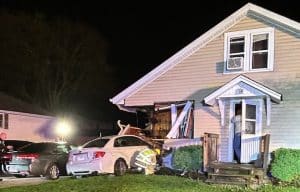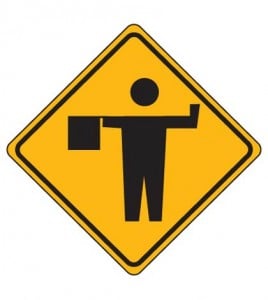Reopening plans proposed
As data appears to show social distancing and stay at home orders have slowed the spread of the novel coronavirus, federal and state officials are preparing to “reopen” the country and state.
President Donald Trump on Thursday issued guidelines for states to begin returning life to some semblance of normalcy, targeting May 1 for a phased reopening in at least some states.
“All of American society is engaged and mobilized in the war against the invisible enemy,” Trump said in a press release. “While we must remain vigilant, it is clear that our aggressive strategy is working.”
The guidelines, titled “Opening Up America Again,” call for states to reopen “in phases, using a deliberate, data driven-approach.” They empower governors to control how states reopen, including whether it is done statewide or on a county-by-county basis.
The guidelines, which say they are developed by medical experts based on data, outline three phases that would gradually return life to something close to normal.
Before any of these phases can begin, however, the guidelines advise that states should meet several criteria.
Those are a downward trajectory in influenza-like illnesses and coronavirus-like cases reported in a 14-day period, a downward trajectory of documented coronavirus cases and positives tests as percent of total tests within a 14-day period and hospitals having the capacity to treat all patients without crisis care and having a testing program for “at-risk” health care works, including developing antibody testing.
A state should meet each of those original criteria each time it looks to move to the next phase of reopening.
The guidelines also list a number of “core state responsibilities” in the areas of testing and contact tracing, health care system capacity and planning to protect citizens form the virus. They also recommend individuals continue to follow tips like frequent hand cleaning, avoiding touching your face and staying home when sick.
There is no specific timeline associated with any of the phases.
Phase one would involve all vulnerable individuals – the elderly and those with underlying medical conditions – continuing to stay at home.
In phase one, social distancing should be maintained and gatherings of 10 or more people where it cannot be practiced should be banned. Individuals should also minimize non-essential travel and continue to work from home if possible.
Schools and organized youth activities like day care would remain closed, as would bars, in this phase. Visits to senior living facilities and hospitals would still be prohibited.
Large venues like restaurants, movie theaters, sporting venues and places of worship, however, “can operate under strict physical distancing protocols.” Similarly, gyms could reopen if they followed strict guidelines and outpatient elective surgeries could resume.
Phase two would begin after a state meets the original criteria again and is not seeing a resurgence in cases.
Vulnerable people should remain at home and social distancing should be practiced, but now only gatherings of 50 or more people should be avoided if social distancing is impossible.
Non-essential travel can resume, but people should continue to work from home.
Schools and organized youth activities can reopen and bars could operate “with diminished standing-room occupancy” in phase two. In-patient elective surgeries could resume. Gyms can continue operating if they follow protocols. Large venues can operate under “moderate” physical distancing protocols.
In the third and final phase, a state would again need to meet the original criteria and have no resurgence in cases.
Vulnerable people can resume public interactions, though they should still practice social distancing. Everyone should consider minimizing time in crowded places, but people can work unrestricted.
Visits to senior care facilities and hospitals can resume in this phase, provided visitors practice good hygiene. Large venues will abide by “limited’ physical distancing guidelines and bars could increase standing room occupancy.
“We’re starting our life again,” Trump said. “We’re starting rejuvenation of our economy again in a safe and structured and very responsible fashion.”
Gov. JB Pritzker has not yet announced Illinois’ plans for reopening, but earlier Thursday he announced a partnership with the governors of Michigan, Ohio, Wisconsin, Minnesota, Indiana and Kentucky to “coordinate reopening” the region’s economy.
“(We) will work in close coordination to reopen our economies in a way that prioritizes our workers’ health,” the governors said in a press release. “We look forward to working with experts and taking a fact-based, data-driven approach to reopening our economy in a way that protects families from the spread of COVID-19. Our No. 1 priority when analyzing when to reopen our economy is the health and safety of our citizens.”
Governors of states on the west coast and in the northeast reached similar agreements in recent days, while Missouri Gov. Mike Parson said his state is starting to work on a plan to reopen despite Parson extending its stay at home order until May 3.
The governors said they will examine at least four criteria when determining how to slowly get things back to the way they were before coronavirus.
Those criteria are demonstrating sustained control of new rate of infections and hospitalizations, having enhanced ability to test and trace the virus, having sufficient health care capacity to handle a resurgence in cases and developing best practices for social distancing in the workplace.
“This doesn’t mean our economy will reopen all at once, or that every state will take the same steps at the same time,” the governors said. “But close coordination will ensure we get this right. Over time, people will go back to work, restaurants will reopen and things will go back to normal.”
The move came after a group of Republican state senators that included Paul Schimpf of Waterloo sent an open letter to Pritzker with their thoughts and recommendations for state policies moving forward.
The state senators called for Illinois to “ease back” on aggressive social distancing when the Illinois Hospital Association projected it had the ICU capacity to handle the predicted number of COVID-19 cases.
“We need to remember the purpose of the closures and social distancing was to ‘flatten the curve’ and slow the spread of the COVID-19 virus,” the senators wrote. “These measures were intended to stop the virus – that is impossible. The critical metric now is – and always has been – the capacity of our hospital system to handle the influx of COVID-19 cases that we know is coming.”
The senators also said businesses and facilities that can practice social distancing should be allowed to operate and called for Pritzker to unveil a reopening plan with a phased timeline that allows local leaders to make decisions on how to open things up to provide “hope” for businesses.
In addition to guidelines from the White House, Pritzker may follow those released by the World Health Organization last week.
The WHO advised that areas should only reopen if transmission of the virus is controlled to sporadic cases and clusters of cases, the health care and public health systems can shift from detecting and treating mainly serious cases of coronavirus to detecting and isolating all cases, outbreaks in high-vulnerability settings like nursing homes are minimized, workplace preventative measures are established, the risk of imported cases is managed and communities are fully engaged and understand everyone plays a key role in ensuring life can safely get back to normal.






